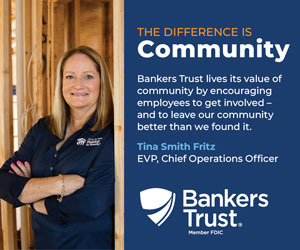On Leadership: How can you prepare the next generation to lead the family business?

Suzanna de Baca Sep 15, 2023 | 6:00 am
5 min read time
1,158 wordsAll Latest News, On Leadership, OpinionThis column is the second in a series on family-owned business issues.
Earlier in my career when I worked in wealth management, I assisted many business owners with the transfer of business ownership from one generation to the next. Designing the right financial transfer took time and care, but discussions about the next generation’s involvement in the business could be more complicated. Professional and personal desires, interest and skills of parents, children and even cousins could be part of the mix, infusing a great deal of both positive and difficult emotions into the process.
“Business families have a unique balancing act compared to their non-family business counterparts: the need to balance the success of the business with the success of the family,” says a recent KMPG report called “Preparing the Next Generation.”
Many family-owned enterprises span multiple generations, which can create both opportunities and challenges for leadership and for the family members themselves. One of the biggest challenges is the need for a written succession plan. But, according to PwC’s Family Business Survey, only one-third of family-owned companies in the U.S. have a comprehensive, written – and communicated – succession plan in place.
Creating and implementing a succession plan to transfer ownership and leadership to the next generation may sound like a simple enough task, but it can be quite complex. Not only do family enterprises have all the regular issues and risks of any business, but they also need to address family dynamics and legacy issues.
The KPMG report notes that special attention is needed for successful transitions from one generation to the next, including the family members’ emotional connection to family business, alignment around the future of the company, intentionality about succession and training of the next generation, and embracing family learning. Those family-related issues often require a different type of strategy and even different professional advisers to help guide multigenerational ownership, roles and relationships.
Over a third of Iowa’s businesses are privately held by families, so preparing the next generation is important to our state’s economy. I turned to several top Iowa leaders and asked: “What are some best practices for family-owned companies looking to transition the business from one generation to the next?”

Mike Ralston, president, Iowa Association of Business and Industry: It seems two things, developing a plan early and constant communication, are critical to the success of generational business transitions. Bring younger family members into the business when they are young and involve them in a multitude of tasks, both tactical and strategic, so they are exposed to all of the business and its employees. Additionally, many families mandate that family members must work outside the family company before they join it. And be ready to do the work when you do join the family business!

JC Risewick, president and chief operating officer, Seneca Cos. Inc.: Family members are viewed in a fish bowl by employees. Every move they make is observed and criticized, especially in the beginning of their employment. It is considered a best practice that all family members be required to work outside the family business for at least three years prior to working at the family business. This allows that family member to make their own way, make mistakes, take risks and have successes outside the fish bowl. That way, they start with solid experience and a clean slate when they do come back to the family business.

Jon Sargent, president and CEO, Todd & Sargent Inc.: Start early! Spoiler alert: This is easier said than done. And it is critical. Transitioning a business is like landing an airplane — with time and intentionality, it can be a graceful (and even inspiring) experience for all aboard. If you haven’t planned, aren’t prepared, and have to force it on an abbreviated timeline, it’s going to be somewhere between awkward, frightening and downright destructive for both you and the organization you have spent your life building. Spending time on this before you think it is a problem will help ensure it doesn’t become one.
Advice for business owners as they consider transitioning the business to the next generation:
Encourage work outside the business. Ralston stresses that from his experience, the most successful family companies are the ones that mandate some experience outside the family company. He says, “That really helps the younger generation grow professionally and makes them accountable for their work.”
Help family members learn and grow within the business. Risewick concurs, advising that when a family member joins the family business, it is helpful to start them at the level that is appropriate with their experience and skills. “If this is at the bottom of the company, then so be it,” says Risewick. “That family member will demonstrate to others the willingness to go through the same things as everyone else.”
Enforce accountability. “If a family member is working in the business, it is important to hold them accountable as you would any other employee,” says Risewick. All parties involved may be initially resistant to this, he notes, but observes, “This practice will set the family member up for long-term success at the family business.”
Be persistent in attracting the next generation. “I know of many family businesses that involved a young generation that thought they did not want to work in the family business,” says Ralston. “The parents kept at them and worked hard to get them in the fold … and the younger generation came around.” Ralston notes that in these cases, over time the younger generations became quite passionate and enjoyed the challenge of continuing to lead the company to success.
Talk about it. “Talk early and often — and openly — about your thoughts and plans,” says Sargent, who notes that in many family businesses, family members are not candid with each other. He says one of the positive things about a family business can be the implicit trust between fellow family members. “If that trust isn’t there, work tirelessly to develop it,” he advises. “If it is there, use it to your advantage when planning for your transition.”
Let go. “The most challenging – and dysfunctional – family business transitions I have seen all have a common theme: a hesitance to let go,” says Sargent. He notes that this is understandable; after all, stepping away from a company you’ve spent your life building might be challenging, stressful and even confusing. Sargent notes, “I’m grateful that our second generation was beyond gracious throughout the transition of company leadership to me as the third generation of our family. They believed I could continue the legacy that they helped create and they supported me through that process.” He adds: “The smoothest transitions seem to come when those who are exiting fully understand that leaving their position does not mean they’re losing their identity, but rather that they’re creating the opportunity for the company they love to move to the next level.”

Suzanna de Baca
Suzanna de Baca is a columnist for Business Record, CEO of Story Board Advisors and former CEO of BPC. Story Board Advisors provides strategic guidance and coaching for CEOs, boards of directors and family businesses. You can reach Suzanna at sdebaca@storyboardadvisors.com and follow her writing on leadership at: https://suzannadebacacoach.substack.com.










